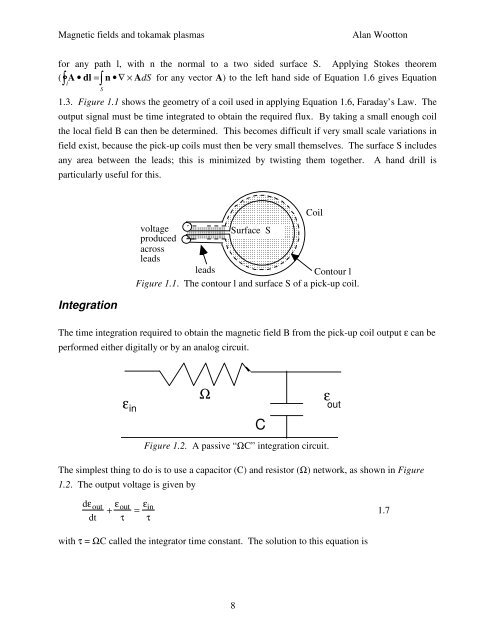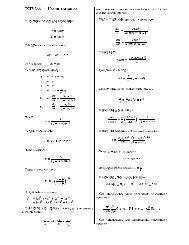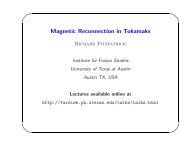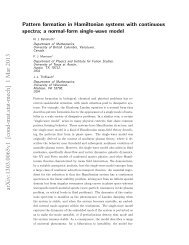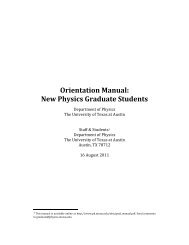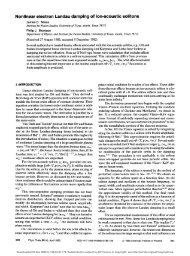Magnetic Fields and Magnetic Diagnostics for Tokamak Plasmas
Magnetic Fields and Magnetic Diagnostics for Tokamak Plasmas
Magnetic Fields and Magnetic Diagnostics for Tokamak Plasmas
You also want an ePaper? Increase the reach of your titles
YUMPU automatically turns print PDFs into web optimized ePapers that Google loves.
<strong>Magnetic</strong> fields <strong>and</strong> tokamak plasmas<br />
Alan Wootton<br />
<strong>for</strong> any path l, with n the normal to a two sided surface S. Applying Stokes theorem<br />
( ∫ A • dl = n • ∇ × AdS<br />
l ∫ <strong>for</strong> any vector A) to the left h<strong>and</strong> side of Equation 1.6 gives Equation<br />
S<br />
1.3. Figure 1.1 shows the geometry of a coil used in applying Equation 1.6, Faraday’s Law. The<br />
output signal must be time integrated to obtain the required flux. By taking a small enough coil<br />
the local field B can then be determined. This becomes difficult if very small scale variations in<br />
field exist, because the pick-up coils must then be very small themselves. The surface S includes<br />
any area between the leads; this is minimized by twisting them together. A h<strong>and</strong> drill is<br />
particularly useful <strong>for</strong> this.<br />
Integration<br />
Coil<br />
voltage<br />
Surface S<br />
produced<br />
across<br />
leads<br />
leads<br />
Contour l<br />
Figure 1.1. The contour l <strong>and</strong> surface S of a pick-up coil.<br />
The time integration required to obtain the magnetic field B from the pick-up coil output ε can be<br />
per<strong>for</strong>med either digitally or by an analog circuit.<br />
ε in<br />
Ω<br />
C<br />
Figure 1.2. A passive “ΩC” integration circuit.<br />
ε out<br />
The simplest thing to do is to use a capacitor (C) <strong>and</strong> resistor (Ω) network, as shown in Figure<br />
1.2. The output voltage is given by<br />
dε out<br />
dt<br />
+ ε out<br />
τ<br />
= ε in<br />
τ<br />
1.7<br />
with τ = ΩC called the integrator time constant. The solution to this equation is<br />
8


